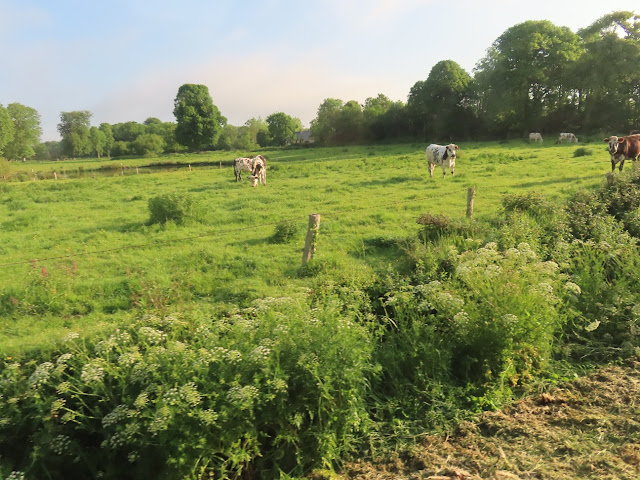Our second port of the cruise was at the large natural harbour of Toulon, in southern France. To be exact, we were docked across the harbour at the commercial port of La Seyne-sur-Mer, and access to Toulon proper was by a daylong shuttle boat. In a first for my cruise experiences, the use of the boat shuttle was not free. The fare, charged to your shipboard account, was US$35. However, passengers who had purchased tours in Toulon from Princess Cruises were excused from paying that fare. The little things they don't tell you ahead of time can sometimes add up to big added expenses. In this case, if you bought your own tour you could very well end up losing money unless your tour was at least $35 cheaper per person than the tour sold by Princess.
So why dock on the other side of the bay? There's no place in Toulon. There's a ferry terminal for the large oceangoing ferries sailing to Corsica or Sardinia, but almost all the rest of Toulon's waterfront is occupied by the Mediterranean headquarters of the French Navy.
The tour I selected had 2 parts -- first, a scenic boat tour around the bay, and second, a walking tour in the old city centre of Toulon. The boat tour was the real prize here, not least because the weather was absolutely perfect for such a purpose.
This first main group of photos include pictures taken on the tour boat. To start with, I have to prove that I was there, of course -- but why was I grinning?
Maybe it was because I had spotted the sign in French identifying the bin full of life jackets?
As we sailed out into the bay, we got a look at the rest of the commercial traffic docked here. As our guides explained, Marseilles is the main commercial cargo port on this coast. Toulon/La Seyne gets only a few smaller cargo ships.
We got a series of views of Emerald Princess as we slowly curved around the pier to head towards the naval dockyard across the bay. I'll let you decide what is her best angle.
By this time, we were approaching the row of piers docking the naval ships. First up was the flagship of the French fleet, the aircraft carrier Charles de Gaulle.
At the end of the naval dockyard, there's a narrow inlet which leads to the city's waterfront, with its waterfront promenade, cafes, shops, and the piers for the shuttle boats -- including ours. Beyond that inlet is the pier for the big seagoing ferries. These ships, almost like cruise liners in themselves, take 8 hours or more to make the crossing from Toulon to ports in Corsica, and in the Italian island of Sardinia. There are ample numbers of private cabins for the overnight voyages.
We then moved further south towards the entrance of the bay. Most of the entrance is blocked by a long breakwater, leaving only one deep-water channel. Ships entering this channel sail west past the end of the breakwater, and then have to turn sharply north -- and all under the stern gaze of several stone forts, one of which is shown here.
After that we headed back to the Toulon waterfront, and docked at the shuttle pier. Our three guides then divided us into 3 groups for the walking tour of the old town. The first intriguing sight was a building dating from the early twentieth century whose builder incorporated this ornamental doorway from the older building which preceded it.
This broad plaza facing the water marked the beginning of the markets. After these merchants of clothes and other assorted goods in the first block, the next three blocks going up the hill were devoted to all sorts of food products.
Beyond the markets, we walked through other streets where many of the buildings featured elegant, even artistic railings on their balconies.
Toulon has a number of famous fountains in the old town. These were the two which we saw.
On a large plaza well up the hill from the water, we saw this theatre now devoted to the opera company, and currently undergoing some repairs.
We then walked downhill, back to the main road along the waterfront, and there we saw the historic main gate of the naval dockyard. It is now the entrance to the Maritime Museum.
Our tour was meant to include a visit to the museum, but this was closed because we were there on May 1, which is Labour Day in France. That also meant we had to take a detour at one point in our walking tour to avoid a parade going on along the boulevard which separates the old town from the more recent parts.
At this point, we were free to spend more time in town, but I chose to head back to the ship for lunch. There, I got some views from the upper decks of the harbour area, the city, the docks, and the mountains which loom up as backdrop to the entire scene.













































